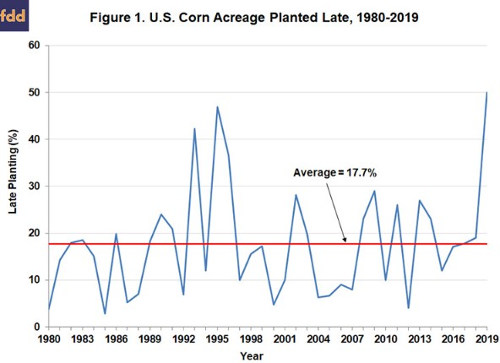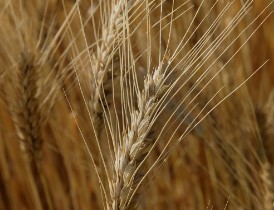15 percent of the crop has emerged
By Diego Flammini
Assistant Editor, North American Content
Farms.com
About 47 percent of the total U.S. corn crop has been planted, according to the USDA’s Weekly Weather and Crop Bulletin for the week of April 30 to May 7.
The number is down from the 52 percent five-year average.
At the state level, farmers in North Carolina have 88 percent of their corn planted, which is up from the five-year average of 87 percent.
Producers in Missouri, Tennessee and Texas have 77 percent of their corn crop planted. Missouri the only one of the three states that is experiencing an increase compared to its five-year average (69 percent).

15 percent of the total American corn crop has emerged, according to the USDA report. This figure is down from a five-year average of 19 percent.
North Carolina has the highest recorded corn emergence at 78 percent, up 10 percent from its five-year average.
Texas has 67 percent of its corn emerged, Tennessee has 61, and Missouri has 42 percent of its corn emerged.
Soybeans
As of May 7, farmers have planted 14 percent of the total U.S. soybean crop.
Louisiana reported 76 of its soybean crop planted, up from the 55 percent average over five years.
And Mississippi reported 74 percent of its soybean crop planted, up from a recorded five-year average of 51 percent.
Farmers in Arizona have half of their soybeans in the ground, compared to the 38 percent average over five years.
Winter Wheat
Nationally, about 50 percent of the U.S. winter wheat crop has headed, according to the USDA’s report.
Arizona reported 100 percent of its winter wheat headed, followed by California at 97 percent, North Carolina and 96 percent and Oklahoma at 90 percent.
Each one of these states is above its five-year average.
California reported 70 percent of its winter wheat as excellent, the most of any state documented. The next highest is Oregon, at 28 percent.

Arizona, Indiana, Michigan, Missouri, North Carolina, Ohio, South Dakota and Washington reported more than half of their winter wheat crop as good.
Spring Wheat
About 54 percent of the national spring wheat crop is planted, according to the USDA. That number is down from the five-year average of 60 percent.
South Dakota reported 94 percent of its spring wheat planted, up from a five-year average of 81 percent.
Washington’s 72 percent planted is down from a five-year average of 91 percent.
South Dakota also leads spring wheat emergence, with 71 percent documented as of May 7. The next highest state is Washington at 46 percent.
Fieldwork Days
The top states, in terms of weekly days suitable for field work as of May 7, were:
1) Arizona – 7
2) California – 6.8
3) New Mexico – 6.7
4) Utah – 6.6
5) North Dakota – 6.5
The states with the fewest number of suitable fieldwork days were:
1) Illinois – 0.6
2) Indiana and Ohio – 0.7
3) Maine and Arkansas – 1.1
4) Missouri – 1.4
Weekly Precipitation Levels as of May 7
State | Precipitation (in inches) | Weather Station |
Illinois | 1.53 | Chicago/O’Hare |
Indiana | 4.36 | Indianapolis |
Iowa | 1.16 | Des Moines |
Kentucky | 5.21 | Paducah |
Michigan | 1.82 | Houghton Lake |
Missouri | 3.30 | Meridian |
New York | 4.46 | Buffalo |
Ohio | 3.50 | Youngstown |
Pennsylvania | 3.00 | Erie |
Tennessee | 3.19 | Chattanooga |
The next Weekly Weather and Crop Bulletin is scheduled for release on Tuesday, May 16.